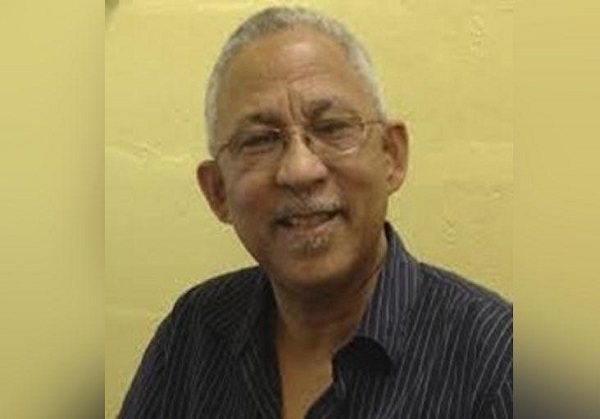The Merriam-Webster dictionary defines la-la land as “a euphoric, dreamlike mental state detached from the harsher realities of life”. In our version, leaders and followers are allergic to facts—inconvenient truths.
They look at life through red and yellow-tinted glasses that allow them to possess selective memories. The citizens of La-La Land reduce serious conversations to sound bites and treasure incivility as a means of argument.

Their solutions are “pelt a jook” and see what happens. These public performances arise from ignorance of the facts, incompetence, or perhaps malicious intentions. Yet miraculously, the citizens confidently expect life to be blissful in a consequence-free world.
Sadly, there is always a bill to be paid. The debt—payable in flood waters this past two weeks—came due.
“In hard times, people want to know you are on their side, even if you cannot help them feel better. You can always help them feel seen; the best way to support them is to show up.” Adam Grant, Wharton School Professor (2022).
Jack Warner, the master of optics, demonstrated this skill when he had the then Prime Minister Mrs Persad Bissessar don water boots in May 2010.

(Courtesy FIFA.com)
The harried Minister Rohan Sinanan is now the sacrificial lamb, and the congenital misreading of the room was disastrous. The Highway debacle on November 29 was utterly tone-deaf.
Where was Sinanan’s wingman? Who was assisting him? Who was helping to make decisions?
The Ministry issued a wrong advisory about the closure of the lanes and panicked the Southbound motorists. An observant poster noted this error on Twitter, but the Ministry never corrected it.
Is it that the Minister had to do so himself? How could the northbound lane not be opened? Those motorists would have been on the roads to Port of Spain since “fo’day morning”.

(via Ministry of Works and Transport)
The Bamboo episode requires us to study all the videos well to appreciate how our leaders leverage the people’s distress for their narrow political ends. Observe the differential in treatment between the Ministers. Observe their different approaches to the situation.
Floods represent an opportunity for slush funds and unaccountable spending. Greenvale comparisons made do not hold. That location had 10 – 16 inches of rain over 72 hours. This weekend’s rains were not in that range. But that was a wink-wink scenario, a playing to the base.
Our floods were a long time coming. The same Jack Warner knows this. How could Cabinet-level ministers not know?
In his August 2018 blog, Afra Raymond recounts the sordid saga of Warner ignoring a broad alliance of professional interests, the Stormwater Management Committee. Their offer to work for free was disdainfully dismissed! Instead, the desire was to access a $120 Million IDB loan, and a contractor was identified.

(Copyright Annalicia Caruth/ Wired868)
The end result?
“In December 2013, the IDB’s Board of Directors approved a US$120 million loan to fund a Flood Alleviation and Drainage Program for the city of Port of Spain as requested by the Government of Trinidad and Tobago. The loan was subsequently cancelled in 2017 after it was determined that further design work was needed in order to implement the project. No money was ever paid out under the loan.” Rocio Medína Bolívar, IDB Group Country Representative.
Try to decipher what Mr Medina Bolivar was saying in his diplomatic phrasing. This statement is an enormous indictment.
The UWI had a four-member team led by Dr Matthew Wilson working on the flooding issue in 2013.

They collected data using airborne laser scanning technology (LiDAR) for a project of the Drainage Division. This project assessed the flood risk in the lower Caroni River basin within the contexts of climate change, community vulnerability and adaptive capacity.
It was designed to fit into the Medium Term Policy Framework 2011-2014 of the Government of Trinidad & Tobago, which aimed to increase the resilience of the poor and vulnerable to the effects of flooding (Ministry of Planning and the Economy, 2011.) What happened?
The Mayaro road collapse is equally stunning. In 2007, Denyse Mahabir and Dr Leonard Nurse reported: “The rapid rate of erosion… has serious implications for the very existence of the road. At the current rate of erosion, the road may cease to exist in 2-3 years if no intervention is made.”

A senior UWI researcher, Keith Miller, commented: “The Atlantic swell causes longshore drift and beach sediments to move southward. Research has been done to suggest that the sediment source has dried up to some extent, so the material is being moved along the beach, but less material is available to replace it.”
The residents had a rancorous meeting with their MP, Winston Peters. Martine Powers reported that Mr Shawn Charles, a Mayaro resident, said: “We could be building a temporary road with the same problems, and next year…we catch a high tide and road wash in again.
“[…] We hope that while you guys are expediting the process that it will be done in such a way that the monies will not be squandered … These things just seem to happen in Trinidad & Tobago … I just hope that years from now we would not hear about some sort of corruption in the temporary road from Manzanilla to Mayaro.”

(Copyright TTPS)
MP Peters retorted: “In order to keep continuation with what we started, what you had to do is keep we in power so you sure we gon’ finish it … Because nobody could account for what a next administration would do.”
Eh, that is what was said!
The Ministry of Works’ Environmental Health Director Doolar Ramlal and MP Peter refused to show the residents the slide show of the work to be done because it had been deemed too “technical” for residents to understand. Utter disrespect to citizens without tinted glasses is the norm in La-La Land.
The upshot? Two months and $57 million were spent fixing seven or eight breaches.

Larry Buss, of a US organisation that focuses on flood preparedness and recovery, said that government officials should use damaged roads as an opportunity to pause and consider investing in new, innovative designs that offer a chance of withstanding heavy flooding in the future.
“A disaster is only a disaster if you rebuild exactly the way it was before,” Buss said. “Something like this always creates opportunities for you to do something better.” But, he added: “most people don’t see it that way.”
But the La-La Land vibes were strong. We proceeded to build the controversial South Highway.
The 2013 Armstrong Report showed us that the then Government learnt their lesson from the Mayaro experience: do not ask the residents anything! They knew their lesson from the IDB fiasco in Port of Spain: do not ask for a loan.

(Copyright AP)
Dr Armstrong criticised the design-build approach saying: “the project is too complex and too controversial to take this laissez-faire approach.” That drama and its impact are still unfolding. The incumbent NIDCO Board and President are still in court with this tale.
The ECLAC study (2019) by L Fontes de Meira and W Phillips on riverine flooding said: “Over the years, several studies have identified and mapped risk areas in the country. Riverine flooding occurs when a body of water exceeds its containment capacity and overflows its banks. This local recurrent problem is well known, and this study took place on the heels of the 2018 floods.
“The report notes there is still no systematic collection of data … [on] economic impacts of flood events.”
We have had 59 crest gauges since 1981! That report has a map of Trinidad’s flood-prone areas based on our GIS data! We know, but we do not listen or do anything.

(Copyright Enrique Assoon/TT Newsday)
It further states: “Flooding as other types of hydro-meteorological events have been exacerbated by developmental change and urbanisation patterns. Loss of protective vegetation caused by bushfires, indiscriminate clearing and degradation of forests for housing and urban development are key drivers.
“Combined with bad agricultural practices such as cultivation on steep slopes, ‘slash and burn’, and poor watershed management, these all contribute to soil erosion and increased sediment yields in rivers and canals that cause changes in the distribution of the total basin runoff over peak flows and baseflows.”
Conservator of Forests Denny Dipchansingh reported unscrupulous quarry operators were bulldozing T&T’s forests. He said the Public Service Commission needs to fill posts for 70 to 80 foresters and 50 forest rangers. Over the past decade, 213 hectares of forests have been destroyed in T&T.

(Copyright Office of the President)
Will La-La Land get washed away eventually? Or will the red and yellow tinted glasses wearers remove them? Will we continue to treat facts as inconvenient truths?

Noble Philip, a retired business executive, is trying to interpret Jesus’ relationships with the poor and rich among us. A Seeker, not a Saint.
 Wired868 Wired868 for smart sport news and opinion
Wired868 Wired868 for smart sport news and opinion






